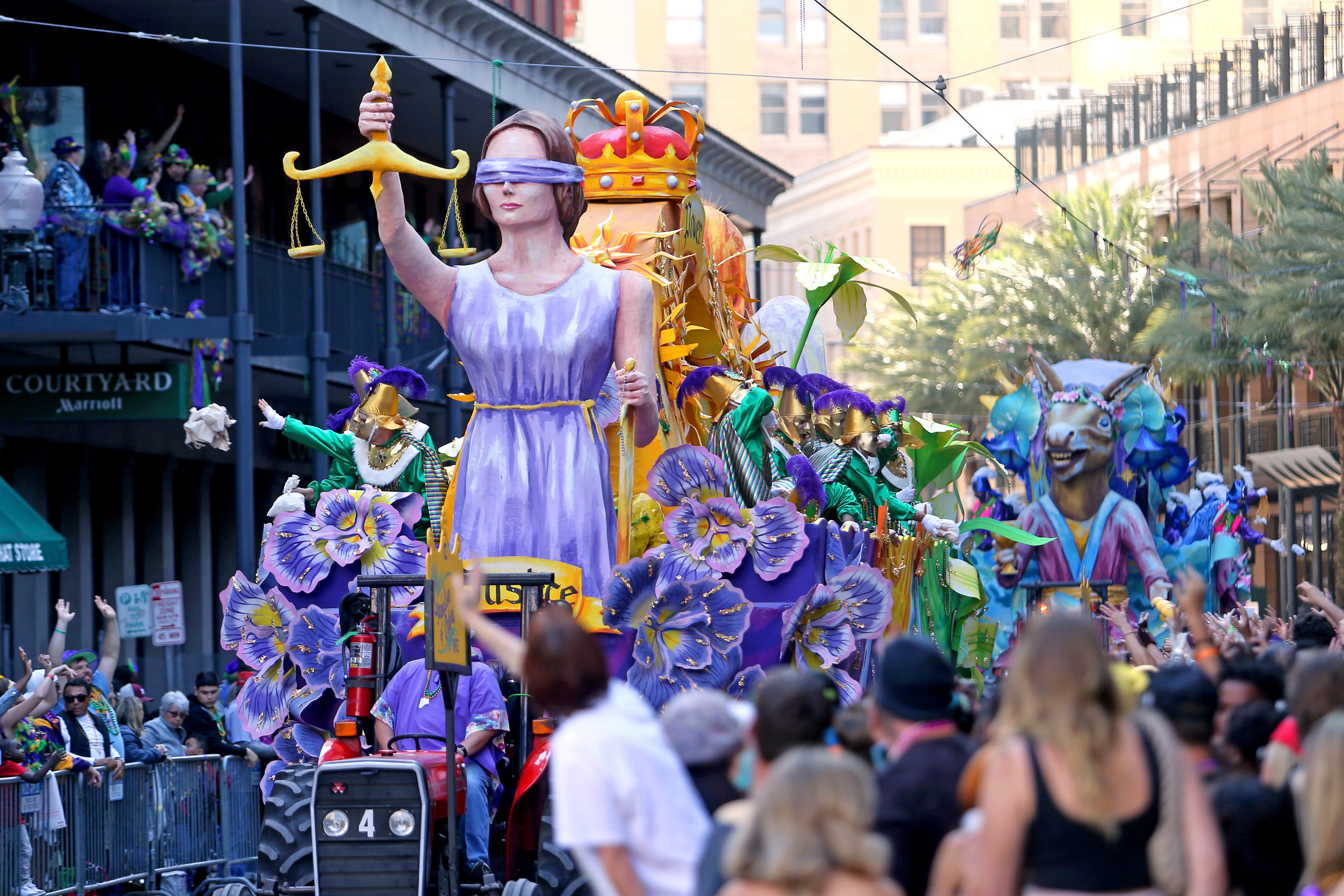City had not deployed steel, mobile 700lb barriers on night of deadly Bourbon Street truck attack. New Orleans plans to protect large sections of its Mardi Gras parade routes with mobile 700lb steel barriers that are designed to prevent intentional vehicle rammings – but were not deployed on the night that the city endured the deadly Bourbon Street truck attack at the beginning of the year, according to the blockades’ manufacturer.
![[Archer barriers in front of a building where a light show is being projected]](https://i.guim.co.uk/img/media/651aabf53abe52ab6be9b2ae7a1a3b9887ed775b/110_0_2542_3179/master/2542.jpg?width=445&dpr=1&s=none&crop=none)
The Meridian Rapid Defense Group announced that the city would expand its renewed use of the company’s Archer 1200 barriers in a recent statement issued after the firm’s chief executive officer indicated time was running out to be able to get the blockades where they needed to be for Carnival celebrations culminating in Mardi Gras on 4 March. The former New Orleans mayor Mitch Landrieu’s administration had acquired an initial inventory of Archer barriers – certified by the US’s homeland security department under a congressional act incentivizing anti-terrorism technology – in 2017 in response to deadly car rammings aimed at crowds in Nice, Berlin, London, New York and Barcelona.
But as a crowd of revelers descended on New Orleans’s globally renowned Bourbon Street to ring in 2025 on the morning of 1 January, the administration of Landrieu’s successor – Mayor LaToya Cantrell – had chosen to leave its Archer barriers in storage. They were one of three types of barriers meant to prevent motorists from purposely targeting crowds that the city had acquired but then did not use on the day of the attack on Bourbon Street, which itself unfolded less than two weeks after a Christmas market in Magdeburg, Germany, was fatally targeted in similar fashion.
The Bourbon Street attack killed 14 people and injured nearly 60 others before police officers were able to fatally shoot the US army veteran who was inspired by the Islamic State (IS). Along with multiple investigations focusing on the assailant, New Orleans officials are grappling with civil litigation from wounded victims and loved ones of those slain who allege that the city failed to adequately protect crowds before the attack.
Cantrell’s administration subsequently hired the former New York and Los Angeles police chief William Bratton to review as well as fortify the city’s security plans against future threats. Perhaps the first major test was the NFL Super Bowl that New Orleans hosted on Sunday, which did not see any of the “copycat or retaliatory attacks” that authorities warned the public about after the killings on Bourbon Street.
Leading up to and throughout the Super Bowl, Meridian’s Archer barriers were a ubiquitous sight along with personnel from numerous local, state and federal law enforcement agencies that were part of the top-level special event assessment rating – or “Sear” classification – given to the big game. Barriers that Meridian provided to the city to supplement its initial stash were seen in place along Bourbon Street and throughout the surrounding French Quarter – including at the city’s St Louis cathedral, where light shows were projected on the building’s exterior.
They were also seen erected outside a theater which hosted the NFL Honors celebration night recognizing the league’s best players and performances of the preceding season. New Orleans is bracing for even larger gatherings as the peak of the Mardi Gras season – arguably known best for numerous street parades throughout the city – kicks off on 21 February. To that end, Meridian officials said its teams would be shielding substantial portions of the city’s parade routes with its barriers. The route used by many of the parades, generally along Saint Charles Avenue, is about 4 miles long.
Meridian’s announcement on 6 February did not elaborate on many specifics. But, in an interview on New Orleans’s WWL Radio in January, Meridian’s CEO, Peter Whitford, said it would take the city renting an additional 900 barriers to protect the parade route. He said it would not be the first time the company has been counted on to protect such festivities. For the annual Rose Parade in its home city of Pasadena, California, Meridian lines up about 600 Archer barriers, which can be wheeled in and out of place in minutes. Whitford told WWL Radio it takes a team of 20 people about 31 minutes to secure that route.
Sign up to Headlines US. Get the most important US headlines and highlights emailed direct to you every morning. after newsletter promotion. And in fact, at the Rose Parade on New Year’s Day 2024, a woman who allegedly had a history of mental illness tried to ram her car past an Archer barricade, which incapacitated her vehicle and saved spectators from being injured or worse. Whitford told WWL Radio that he realized the barriers would need to be deployed and then removed constantly at the height of the Mardi Gras season because streets are only closed temporarily for the parades. But he said the Formula One racing series has availed itself of Meridian’s Archer barriers to protect its grand prix in Las Vegas, which generally takes place along the drag colloquially known as the Strip.






















